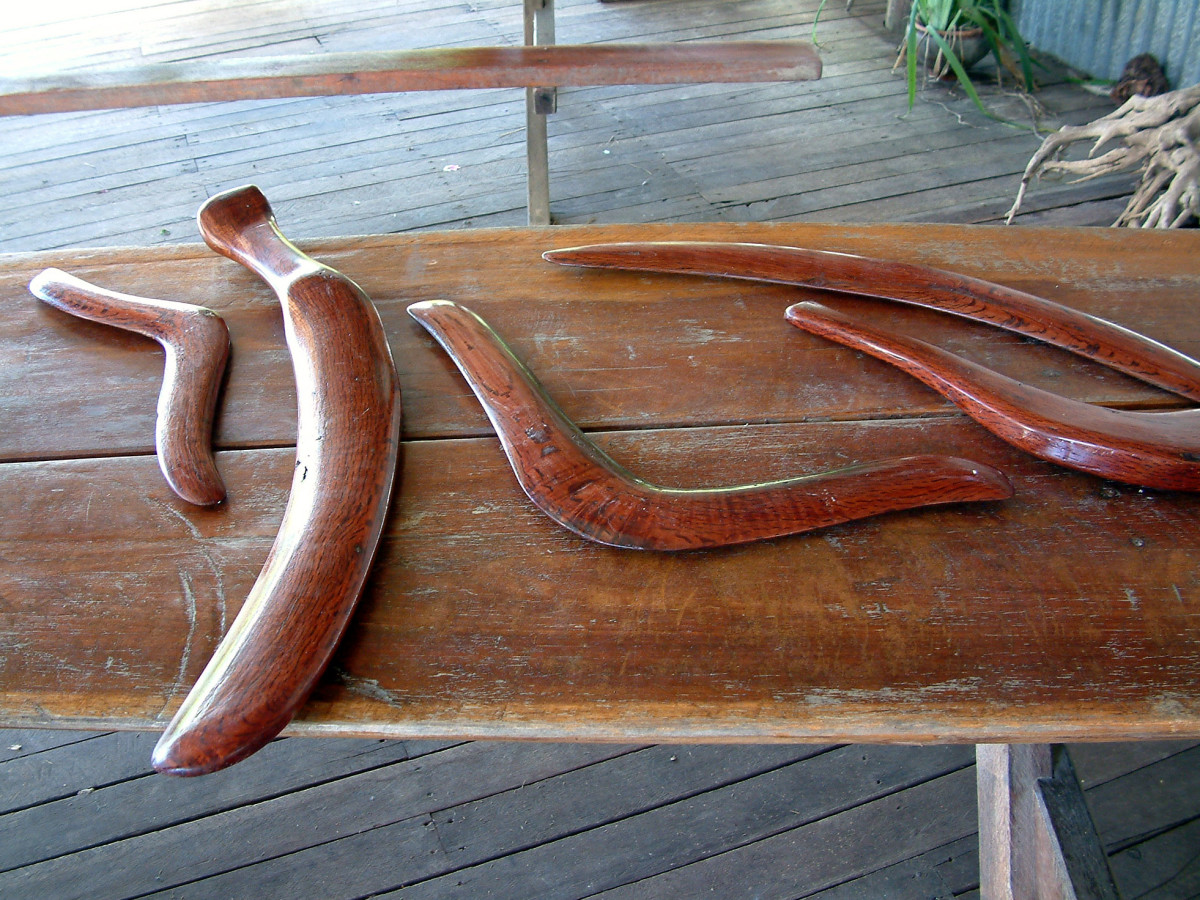Boomerangs work on the same principles of aerodynamics as any other flying object; the key to how a boomerang works is the airfoil.
An airfoil is flat on one side but curved on the other with one edge thicker than the other - this subjects the boomerang to lift, keeping it in the air. The lift is generated because the air flowing up over the curve of the wing has further to travel than the air flowing past the flat side. The air moving over the curve travels faster in order to reach the other side of the wing, creating lift.
A boomerang has two airfoils, each facing in a different direction. This makes the aerodyamic forces acting on a thrown boomerang uneven. The section of the boomerang moving in the same direction as the direction of forward motion moves faster than the section moving in the opposite direction. Just like tank tracks moving at different speeds, this causes the boomerang to turn in the air and return to the thrower.
Most original boomerangs don't come back, and are not intended to do so! The returning variety are thought to have been made to scare birds into hunters nets.
मराठी :
इतर कोणत्याही उडणाऱ्या वस्तूप्रमाणे एरोडायनामिक्सच्या समान तत्त्वांवर बूमरॅंग्स कार्य करतात; बुमरॅंग कसे कार्य करते त्याची कळफळ म्हणजे एअरफईल.
एक एअरफोईल एका बाजूला सपाट असतो परंतु एका काठाने दुसऱ्या बाजूला जाडसर वक्र असतो - हा बुमेरंग उचलायला हवा, तो हवेत ठेवून ठेवतो. लिफ्ट व्युत्पन्न केली गेली आहे कारण पंख च्या वक्र वर वाहणारी हवा सपाट बाजूने वाहणाऱ्या हवेपेक्षा पुढे प्रवास करते. वक्र ओलांडत असलेली हवा पंखच्या दुसऱ्या बाजूला पोहोचण्यासाठी लिफ्ट तयार करण्यासाठी वेगवान प्रवास करते.
बुमरॅंगमध्ये दोन एअरफोइल्स असतात, प्रत्येकजण वेगळ्या दिशेने तोंड करतो. हे फेकलेल्या बूमरॅंगवर कार्य करणारी वायुगतिक शक्ती असमान बनवते. फॉरवर्ड मोशनची दिशा उलट दिशेने जाणाऱ्या सेक्शनपेक्षा वेगाने फिरणार्या बुमेरॅंगचा विभाग. जसे वेगवान वेगाने टँकचे ट्रॅक फिरतात, यामुळे बुमरॅंग हवेमध्ये बदलतात आणि थ्रोवर परत येतात.
बर्याच मूळ बुमरॅंग परत येत नाहीत आणि असे करण्याचा हेतू नाही! परत येणारी वाण पक्ष्यांना शिकारीच्या जाळीमध्ये घाबरवण्यासाठी बनवलेले आहे असे मानले जाते.

Comments
Post a Comment